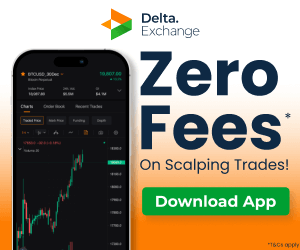Community-driven crypto projects represent a paradigm shift in digital assets, where user governance and collective decision-making shape development and growth. These projects often demonstrate stronger user loyalty, sustainable growth, and resilient ecosystems. For investors, this means backing innovations that are market-validated and naturally aligned with user needs and desires.
Following is a list of the top 5 community-driven crypto projects:
1. Aave (AAVE)
The decentralised finance sector continues to attract substantial institutional attention through Aave’s innovative lending platform. The protocol has emerged as a frontrunner in the DeFi space, eliminating traditional banking intermediaries.
Aave’s governance structure has particularly impressed institutional investors. Through structured proposals and on-chain voting, AAVE token holders maintain strong community control over the platform’s development direction.
Furthermore, the platform’s delegation system allows for efficient decision-making while maintaining decentralisation. The implementation of service providers and guardians ensures robust risk management and security protocols.
2. Tron (TRX)
Since its 2017 launch, Tron has captured institutions interest with its unique approach to digital content creation rights. The platform’s modified proof-of-stake mechanism stands out in the blockchain space.
Tron’s designated proof-of-stake system empowers community members to elect super representatives. These representatives play crucial roles in transaction validation and block creation processes.
The platform’s high throughput capabilities have particularly attracted institutional attention. However, market observers note ongoing discussions regarding centralisation aspects within the ecosystem.
3. Solaxy (SOLX)
Institutional investors have shown growing interest in Solaxy’s innovative approach to Solana’s scaling challenges. The platform’s off-chain transaction processing presents a promising solution to network congestion.
Following this, the project’s token allocation strategy has garnered positive attention. A significant 25% of tokens are designated for community rewards, encouraging active participation.
The platform’s DAO governance model enables token holders to directly influence crucial decisions. This democratic approach to platform development aligns with institutional preferences for transparent governance structures.
4. Meme Index
In an unexpected trend, institutions are exploring the Meme Index as a strategic entry point into the volatile meme coin market. The index provides a structured approach to this typically unpredictable sector.
Notably, the community-governed index system allows for democratic asset selection. Investors can participate in voting processes that determine the composition of various coin baskets.
Through this approach, the index successfully balances portfolio management with community input. This structure has attracted institutional investors seeking regulated exposure to the meme coin segment.
5. Polkadot (DOT)
Institutional investors recognise Polkadot’s potential in solving blockchain interoperability challenges. The platform’s framework enables seamless connection between previously isolated blockchain networks.
Polkadot’s governance system has emerged as a key attraction for institutional stakeholders. DOT holders actively participate in parachain auctions and critical governance proposals.
The Web3 Foundation’s support for ecosystem projects has strengthened institutional confidence. Cross-chain interoperability decisions remain community-driven, ensuring sustainable, decentralised growth.
Written By Fazal Ul Vahab C H




